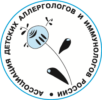Antihistamines in therapy of allergic rhinitis
S.S. Masalskiy, Y.S. Smolkin
Scientific and clinical advisory center of an allergology and immunology, Moscow, Russia
NRC Institute of Immunology FMBA of Russia, Moscow, Russia
ALLERGOLOGY AND IMMUNOLOGY IN PEDIATRICS, Volume 53 • Number 2 • June 2018, pp. 5 – 13
DOI: 10.24411/2500-1175-2018-00006
The article describes a phenotypic approach to the treatment of allergic rhinitis (AR), according to modern guidelines from the standpoint of evidence-based medicine. An algorithm for the treatment of AR is formulated for the practical doctor. In most cases, the first line of treatment is antihistamines. As a second-line therapy, a combination of antihistamine and topical glucocorticosteroids is used in various forms. Leukotriene receptor antagonists can be considered as an alternative therapy in special cases. A review of existing meta-analyzes of the effectiveness of therapy in AR allows us to consider cetirizine as one of the most effective drugs with a high safety profile.
- ARIA 2016: Care pathways implementing emerging technologies for predictive medicine in rhinitis and asthma across the life cycle / J. Bousquet, P.W. Hellings, I. Agacheet al. // Clinical and translational allergy. 2016. № 6. Vol. 1. DOI: 10.1016/j.jaci.2017.03.050
- Садоха К.А. Перспективное предупреждение осложненной мигрени //Медицинские новости. 2012. №. 5. С. 30–32.
- Asero R., Pravettoni V. Anaphylaxis to plant-foods and pollen allergens in patients with lipid transfer protein syndrome // Current opinion in allergy and clinical immunology. 2013. Vol. 13, № 4. P. 379–385.
- Cross-reactive LTP sensitization in food-dependent exercise-induced urticaria/anaphylaxis: a pilot study of a component-resolved and in vitro depletion approach/ D. da Silva, T. Vieira, A. Pereira et al. //Clinical and translational allergy. 2016. Vol. 6, №. 1. P. 46. doi: 10.1186/s13601-016-0136-5.
- Бурлуцкая А.В., Фирсова В.Н. Синдром непереносимости гистамина у детей //Кубанский научный медицинский вестник. 2017. Т. 24, № 4. С. 185–190.
- Endotypes and phenotypes of chronic rhinosinusitis: a PRACTALL document of the European Academy of Allergy and Clinical Immunology and the American Academy of Allergy, Asthma & Immunology./ C.A. Akdis et al. //Journal of Allergy and Clinical Immunology. 2013. Vol.131, № 6. P. 1479–1490.
- International Consensus Statement on Allergy and Rhinology: Allergic Rhinitis / S.K. Wise, S.Y. Lin, E. Toskala et al. // International forum of allergy & rhinology. 2018. Vol. 8, № 2. P. 108–352.
- Аллергология. Федеральные клинические рекомендации / под ред. Р.М. Хаитова, Н.И. Ильиной. М.: ФармарусПринт Медиа, 2014. 126 с.
- Аллергический ринит у детей. Клинические рекомендации. 2016. [Электронный ресурс]: Союз педиатров России: сайт. URL: (дата обращения 13.04.2018).
- Аллергическийриноконъюнктивит: (клинические рекомендации) / Н.А. Арефьева и др. / под ред. А.С. Лопатина; Российское о-воринологов. М: Практическая медицина, 2015. 96 с.
- A network meta-analysis of randomized controlled trials focusing on different allergic rhinitis medications /J. Xiao, W.X. Wu, Y.Y. Ye et al. //American journal of therapeutics. 2016. Vol. 23, № 6. P.1568–1578.
- Азеластин. Каталог действующих веществ [Электронный ресурс]: Регистр лекарственных средств России: сайт URL:https://www.rlsnet.ru/mnn_index_id_1912.htm, (дата обращения 13.04.2018).
- Левокабастин. Каталог действующих веществ [Электронный ресурс]: Регистр лекарственных средств России: сайт URL:https://www.rlsnet.ru/mnn_index_id_1987.htm(дата обращения 13.04.2018).
- H-1 antagonists: receptor affinity versus selectivity / M. Gillard, B. Christophe, BWels et al. // Inflammation Research. 2003. Vol. 52. P.49–50.
- Гущин И.С. Потенциал противоаллергической активности и клиническая эффективность Н1-антагонистов //Аллергология. 2003. Т. 6101. С. 37–45.
- Gillman S., Gillard M., Benedetti M.S. Концепция замещения рецепторов как предиктор клинической эффективности препарата: сравнительный анализ блокаторов Н1-рецепторов второго поколения //Современная педиатрия. 2015. № 5 (69).
- Du Q., Zhou Y. Placebo-controlled assessment of somnolence effect of cetirizine: a meta-analysis // International forum of allergy & rhinology. 2016. Vol. 6, № 8. P. 871–879.
- The fetal safety of cetirizine: an observational cohort study and meta-analysis / F. Etwel, N. Djokanovic, M.E. Moretti et al. // Journal of Obstetrics and Gynaecology. 2014. Vol. 34, № 5. P. 392–399.
- Инструкция по медицинскому применению препарата.Зодак капли РУ ЛС-000433-180711, Зодак таблетки РУ П N 013867/01-150212.
- Изучение активности изоферментов цитохрома Р450 для прогнозирования межлекарственных взаимодействий лекарственных средств в условиях полипрагмазии/ Д.А. Сычёв, В.А. Отделенов, Н.П. Денисенко и др. //Фармакогенетика и фармакогеномика. 2016. №. 2. С. 4–9.
- EPOS 2012: European position paper on rhinosinusitis and nasal polyps 2012. A summary for otorhinolaryngologists / W.J. Fokkens, V.J. Lund, J. Mullol et al. //Rhinology. 2012. Vol. 50, №. 1. P. 1–12.
- Курбачева О.М., Польнер С.А., Смирнов Д.С. Аллергический ринит. Вечная проблема и ее современное решение //Медицинский совет. 2015. №. 3.
- Зайцева О.В. Острые респираторные инфекции у детей с аллергией // Врач. 2011. №. 1. С. 18–20.
- Караулов А.В., Юцковский А.Д., Грачева Т.С. Хроническая крапивница: от понимания механизмов возникновения к новому консенсусу лечения //Аллергология и иммунология. 2013. Т. 14, №. 3. С. 169–173.
- Современные возможности терапии поллиноза у детей / С.В. Зайцева, Э.Э. Локшина, О.А. Муртазаева и др. // РМЖ. 2012. Т. 20, №. 6. С. 314–319.
Masalskiy SS, Smolkin YS. Antihistamines in therapy of allergic rhinitis. Allergology and Immunology in Pediatrics. 2018;53(2):5-13. (In Russ.) https://doi.org/10.24411/2500-1175-2018-00006
For correspondense
S.S. Masalskiy
e-mail: masalsky@live.com.
Y.S. Smolkin
e-mail: smolkinyury@hotmail.com.
